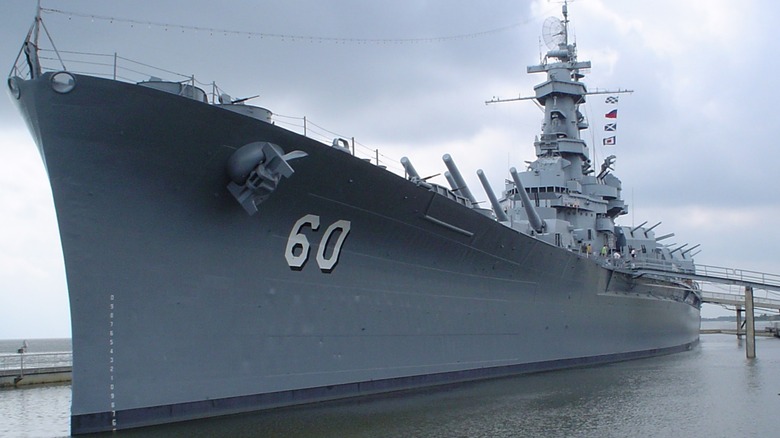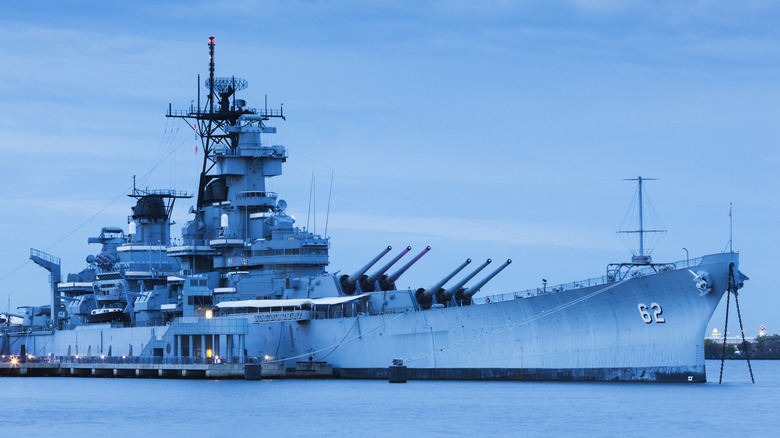What Does BB Stand For On Navy Ships
There's a long history of tradition in the United States Navy, which covers everything from uniforms to the naming of ships. Often, naval vessels receive their names based on a theme; modern nuclear aircraft carriers bear the names of U.S. Presidents, while the nation's barely-used Ohio-class nuclear submarines are named after states. These themes continue throughout most classes of ships, each of which has a standard naming convention. That's all well and good for a vessel's actual name, but what about its hull designation? The letter and number codes used to identify vessels have their own logic. The U.S. Navy previously assigned the designation "BB" to its battleships. The reason the Navy no longer tags its ships with BB is because the U.S. doesn't build battleships anymore. That's unlikely to change anytime soon, as modern missile platforms have long since outperformed 20th-century battleships.
The Navy began designating its battleships as BB in 1920, and the tag became a standardized means of identification from that point forward. The letter and number hull designations became standard practice in the 1890s, making it one of the nation's oldest military traditions. The letters identify the type of ship, and the numbers are assigned sequentially. The first ship of the battleship class, the USS Indiana, was retroactively designated BB-1 years after construction. Here's how the U.S. Navy classifies its ships and why it settled on designating its battleships as BB instead of B.
How U.S. Navy ships are classified
Initially, the U.S. Navy referred to its ships by type and name. So, a vessel like Old Ironsides, the USS Constitution, was called the frigate Constitution. Name repetition created confusion, so the Navy opted for standardization, using an alphanumeric designation for all of its ships. These naval registry identification numbers are still in use today, and they started out much the same. The first cruiser, the USS Newark, became Cruiser No. 1, but eventually this was shortened to just a letter and number: C-1. The USS Maine was an armored cruiser, so it became ACR-1. This convention continued with BB for battleships, DD for destroyers, and SS for submarines, though additional letters were added to further distinguish the types of ships within some classes. Examples include CV for aircraft carriers, DE for destroyer escorts, CL for light cruisers, CA for heavy cruisers, and AM for minesweepers.
For many ships lacking a secondary classification or longer description, its original designation letter was simply repeated. Simply put, the Navy uses BB for battleships because there's no logical second letter that would complement the first B. Between 1888 and 1947, the Navy built 59 battleships and planned 20 more, plus three battle cruisers. The last U. S. Navy battleship was the Kentucky (BB-66), which was never finished. Should the nation return to using the massive floating gun platforms — which seems implausible — further designations of the type might be considered. That said, it's unlikely the world will ever see a battleship of the kind used through much of the 20th century ever again.

